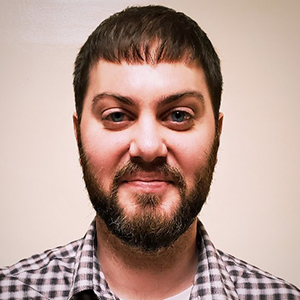Preventing missed diagnoses of hyperekplexia in newborns
People with hyperekplexia react profoundly to sudden noises, movements and touch.
“Loud noises such as clapping your hands can cause an excessive startle in newborns,” explained Ghada Aboheimed, an assistant professor at King Saud University in Saudi Arabia and the lead author of a new study of the condition in the Journal of Biological Chemistry.

In addition to excessive startle response, hyperekplexia is characterized by nonepileptic seizures and extreme muscle stiffness that even can prevent voluntary movement. This rare condition often is diagnosed at birth and is known to be caused by genetic mutations in GLRA1, SLC6A5, GLRB and several other genes that play roles in glycine-mediated signaling in the nervous system.
In the new study, Aboheimed and co-authors discovered in a newborn girl a novel mutation in GLRB that caused a recessive form of hyperekplexia. “We collected samples from hyperekplexia patients and their families from different hospitals in Saudi Arabia and analyzed the genetic cause of their disease using advanced sequencing and analysis technologies,” Aboheimed said.
The mutation that the team identified led to decreased expression of the beta-subunit of the glycine receptor ion channel. Using coimmunoprecipitation and confocal microscopy, the researchers found altered cellular localization of the α/β receptor dimer. Using patch clamp electrophysiology, they demonstrated reduced glycine sensitivity of the mutant receptor. The mutated residue, found on an outer transmembrane helix, introduced steric clashes that destabilized the protein and led to decreased activation of the ion channel upon glycine binding.
Aboheimed said that she hopes the identification of this and similar mutations can help doctors accurately diagnose hyperekplexia in newborns.
“When added to the epilepsy gene screening panels, (the genes) will help to avoid misdiagnosing hyperekplexia with epilepsy, resulting in early genetic diagnosis of the disease and preventing the use of multiple antiepileptic treatments administered to newborns, and potentially death due to apnea,” she said.
People with hyperekplexia usually are treated with the drug clonazepam, which is an anti-anxiety and anti-spastic medication. The girl in Aboheimed’s study found to have the novel mutation in GLRB responded well to clonazepam and is in school, she said. As they get older, most patients experience sudden falls, which can cause serious injuries, and excessive startle to sudden loud noises, which can prevent them from doing normal activities such as driving a car.
“Studying rare diseases such as hyperekplexia can help patients’ families understand the genetic cause of the disease and the inheritance mode … But working on such cases sometimes leads to identifying novel genes and thus further understanding the pathogenesis of the disease,” Aboheimed said. “Our next step is to identify other possible genes related to this disease to help us broaden our understanding of its pathology, and eventually to develop personalized treatment using gene therapy.”
Enjoy reading ASBMB Today?
Become a member to receive the print edition four times a year and the digital edition monthly.
Learn moreGet the latest from ASBMB Today
Enter your email address, and we’ll send you a weekly email with recent articles, interviews and more.
Latest in Science
Science highlights or most popular articles

Bacteriophage protein could make queso fresco safer
Researchers characterized the structure and function of PlyP100, a bacteriophage protein that shows promise as a food-safe antimicrobial for preventing Listeria monocytogenes growth in fresh cheeses.

Building the blueprint to block HIV
Wesley Sundquist will present his work on the HIV capsid and revolutionary drug, Lenacapavir, at the ASBMB Annual Meeting, March 7–10, in Maryland.

Gut microbes hijack cancer pathway in high-fat diets
Researchers at the Feinstein Institutes for Medical Research found that a high-fat diet increases ammonia-producing bacteria in the gut microbiome of mice, which in turn disrupts TGF-β signaling and promotes colorectal cancer.

Mapping fentanyl’s cellular footprint
Using a new imaging method, researchers at State University of New York at Buffalo traced fentanyl’s effects inside brain immune cells, revealing how the drug alters lipid droplets, pointing to new paths for addiction diagnostics.

Designing life’s building blocks with AI
Tanja Kortemme, a professor at the University of California, San Francisco, will discuss her research using computational biology to engineer proteins at the 2026 ASBMB Annual Meeting.

Cholesterol as a novel biomarker for Fragile X syndrome
Researchers in Quebec identified lower levels of a brain cholesterol metabolite, 24-hydroxycholesterol, in patients with fragile X syndrome, a finding that could provide a simple blood-based biomarker for understanding and managing the condition.

